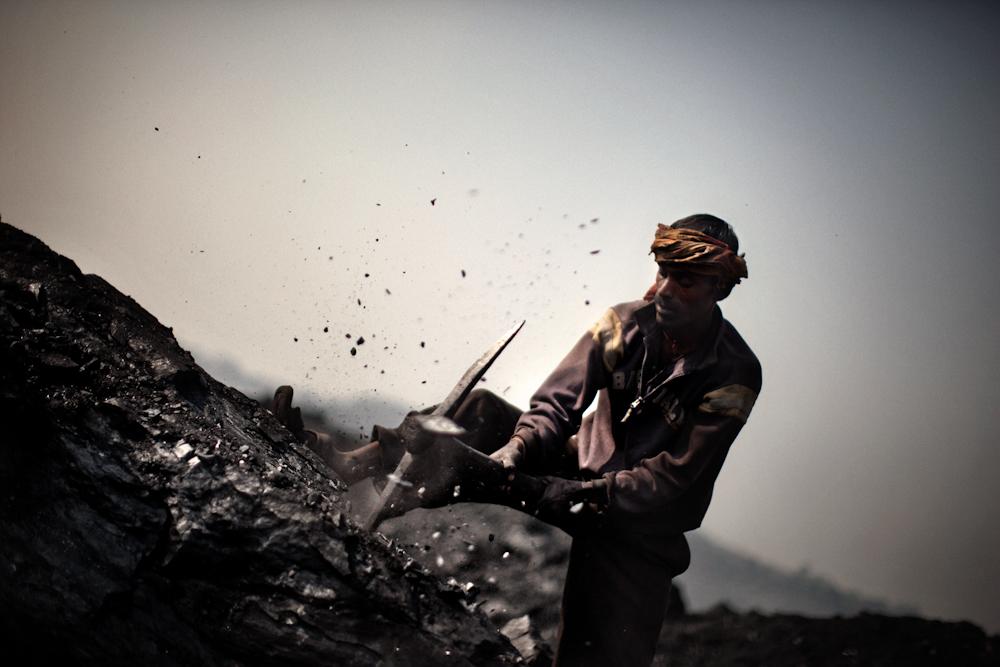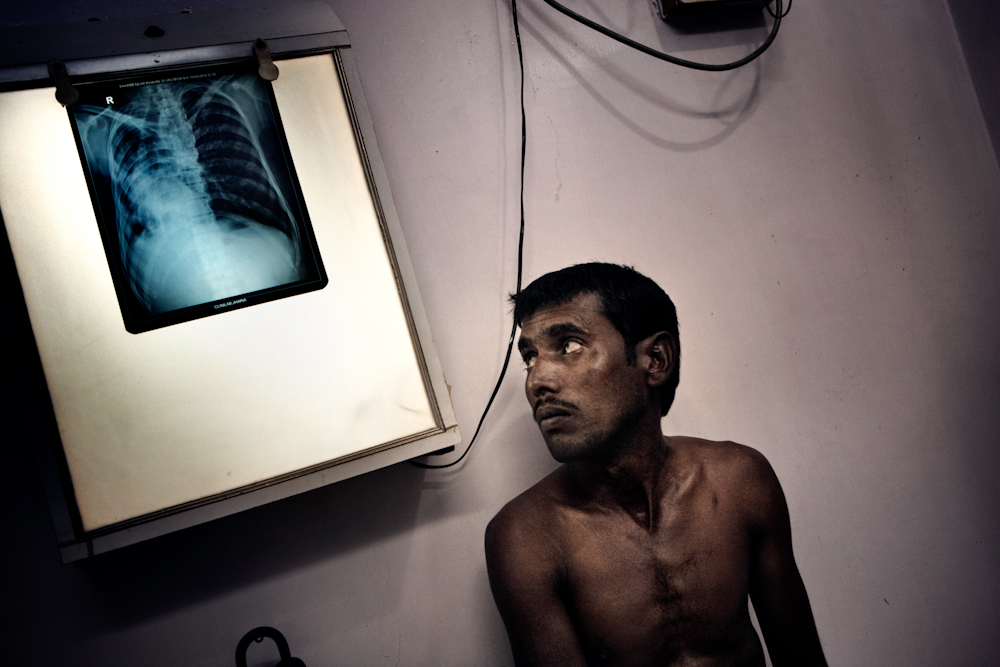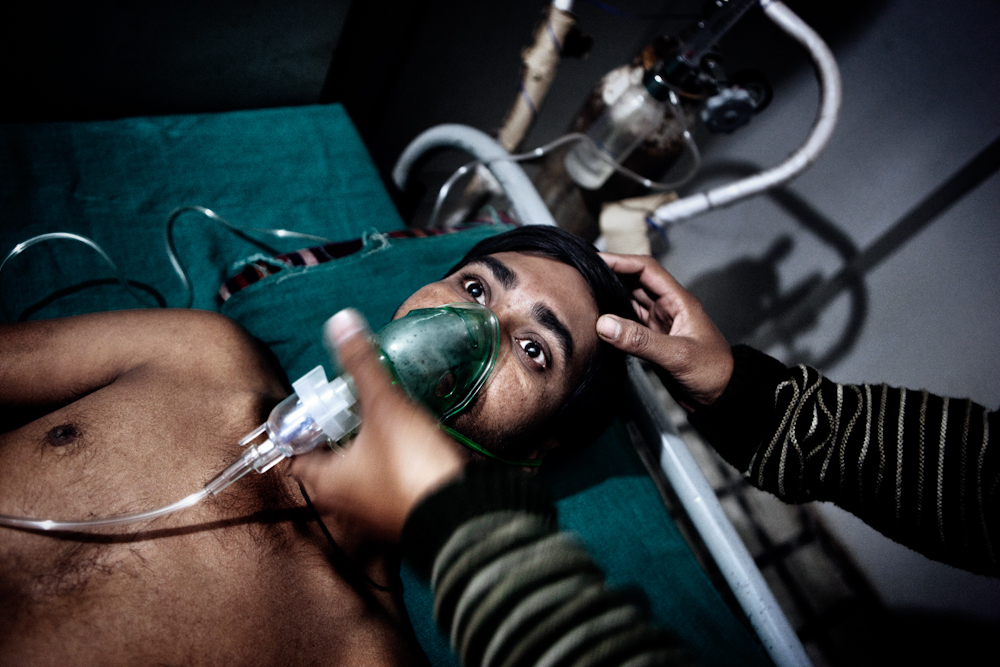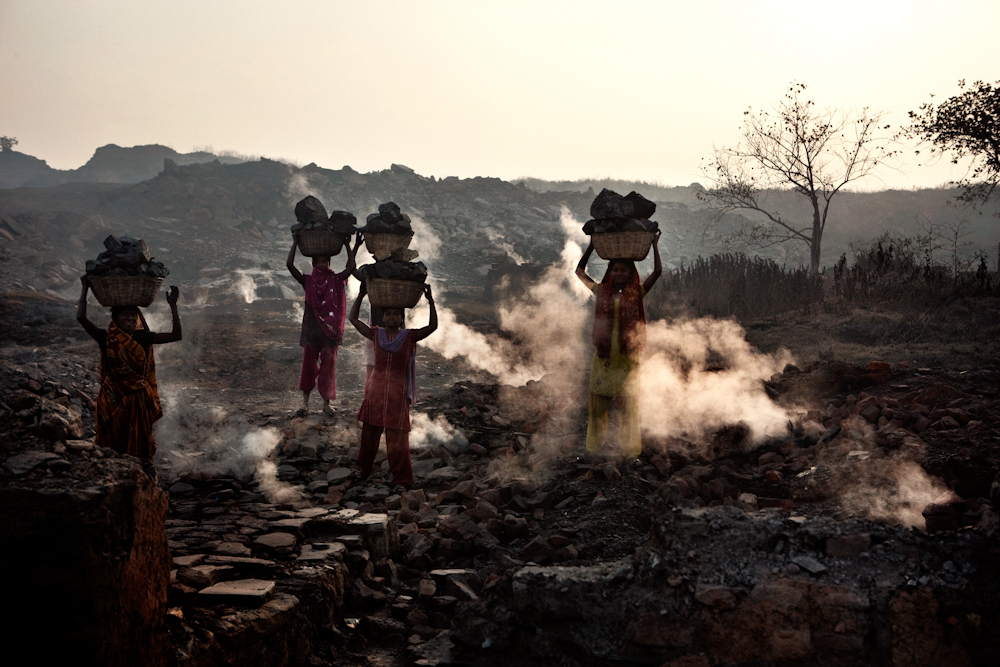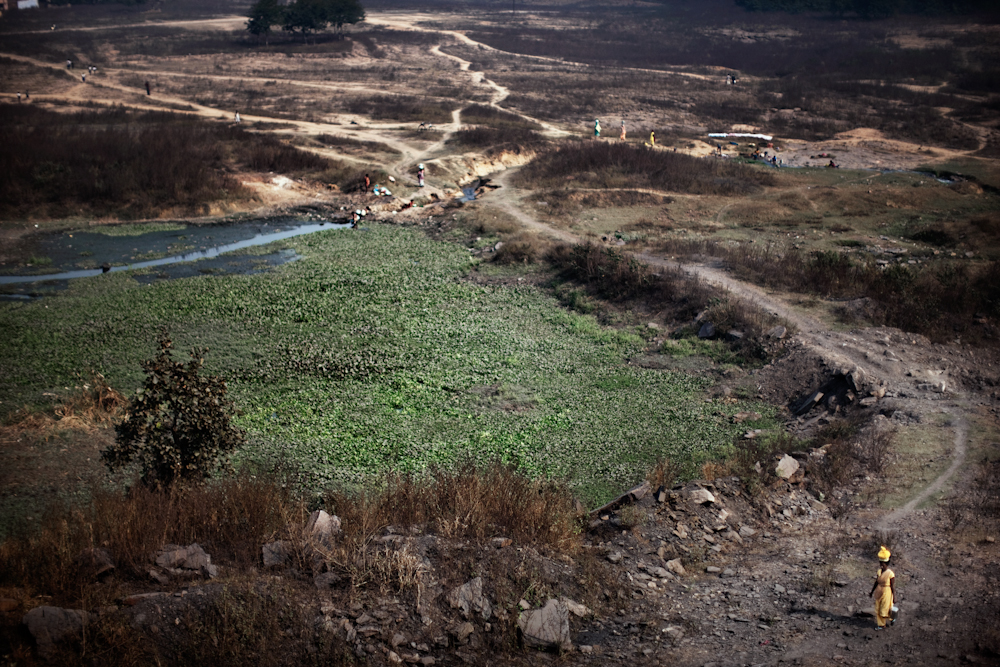The real cost of Indian coal

-
PhotographerErik Messori
-
Agency / StudioCAPTA
The coalmining industry of Eastern India is producing inhumane conditions and shantytowns. Jharkhand, the second worldwide producer and supplier of coal is destroying entire forests and the life expectancy of its workers in order to satisfy the increasing demands of progress. The increased production of carbon monoxide and deforestation both created by the open-cut Indian coal mines have implications which will affect not only the Indian workers health, but India as nation as well as the rest of the world. Jharkhand, India’s eastern mining state not only produces coal for India but is currently the second largest producer of coal worldwide. Second only to China, India extracts from its land a sufficient quantity of coal for its own energy and transport use and has enough to also export worldwide. 90% of the mines are open-cut, where incessant digging and spontaneous combustion of coal are releasing incalculable amounts of carbon monoxide, a major cause of global warming. Entire forests have been destroyed in order to make room for this savage extraction in order to satisfy the increasing demand. The central state which grants concessions for extracting the coal manages both state and private enterprises and in turn has created a social and economic imbalance of the induced mining area, as this was once an agricultural zone and is now entirely restructured for coal mining. Many people are unemployed and unable to cultivate the fields as the waterways are contaminated with polluting agents derived from the combusting coal. The millions of people without economic possibilities are forced to work illegally, in unsafe conditions and with the government police always in toe. The escalating pollution from coal mining endangers the local population to the risk of very serious respiratory diseases including various types of tuberculosis, lung cancer, tumours, and occlusions of the respiratory airways together with blood diseases and cardiac dysfunctions caused by the inhalation of carbon monoxide, all of which leads to an average lifespan that does not exceed 50 years. These pathologies are destroying the future of the Indian State in the name of progress. Throughout Jharkhand, new villages are springing up in close proximity to the open-cut coalmines, with devastating consequences for the population, as many people live without basic hygienic-sanitary infrastructures. Entire shantytowns, lacking in running water and a sewage system, filled with people who breathe the toxic airborne thin powder and carbon monoxide, are existing in a situation where the local and state infrastructures which should guarantee minimal sanitary assistance, are completely insufficient and inadequate.
Erik Messori focuses his work on photojournalism and reports on both national and international issues. His professional development has included attending Gianni Berengo Gardin seminars on photography in Milan. Messori’s works have been published in: National Geographic Italia, l'OBS Magazine, The Guardian, Herald Sun, Daily Telegraph, Der Spiegel, CNN, Wired Magazine Italia, SDZ, Days Japan, Vision Magazine, Private Magazine, Corriere della Sera, La Stampa, Le Journal de la Photographie, Photojournale, The Australian, Out of Focus Magazine.
